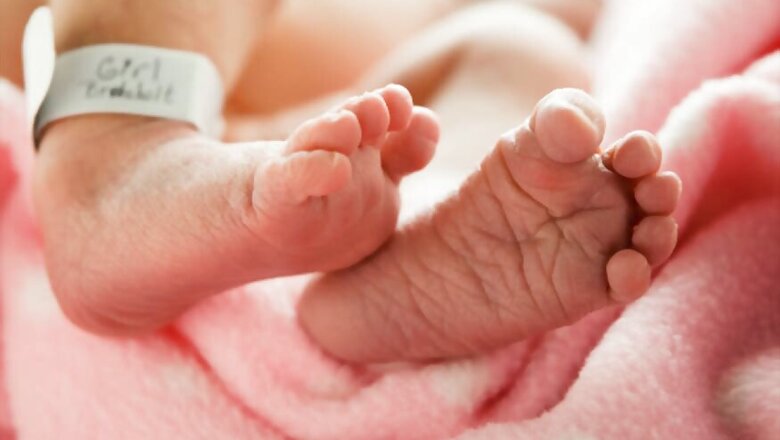
views
London: The number of babies born in India through caesarean section increased from nine per cent in 2005-6 to 18.5 per cent in 2015-16, according to a series of three papers published in The Lancet journal, which also found that C-section use almost doubled worldwide between 2000 and 2015.
While the life-saving surgery is still unavailable for many women and children in low-income countries and regions, the procedure is overused in many middle- and high-income settings, said researchers, including those from Ghent University in Belgium.
In the 10 countries with the highest number of births in 2010-2015, there were large differences in caesarean section or C-section use between regions - for example, differences between provinces in China ranged from four per cent to 62 per cent, and inter-state differences in India ranged from seven per cent to 49 per cent, they said.
Globally, C-section use has increased by 3.7 per cent each year between 2000-2015 — rising from 12 per cent of live births (16 million of 131.9 million) in 2000, to 21 per cent of live births (29.7 million of 140.6 million) in 2015, researchers said.
In India, C-section use increased from nine per cent of births in 2005-6 to 18.5 per cent in 2015-16, the research found.
C-section is a life-saving intervention for women and newborns when complications occur, such as bleeding, foetal distress, hypertensive disease, and babies in abnormal position.
However, the surgery is not without risk for mother and child, and is associated with complications in future births, researchers said.
It is estimated that 10-15 per cent of births medically require a C-section due to complications, suggesting that average C-section use should lie between these levels.
However, the Series authors estimate that more than one in four countries in 2015 had lower levels (28 per cent), while most countries used C-section above the recommended level (63 per cent).
In at least 15 countries C-section use exceeds 40 per cent, researchers said.
"Pregnancy and labour are normal processes, which occur safely in most cases. The large increases in C-section use — mostly in richer settings for non-medical purposes — are concerning because of the associated risks for women and children," said Series lead Marleen Temmerman from Aga Khan University in Kenya and Ghent University.
"C-sections can create complications and side effects for mothers and babies, and we call on healthcare professionals, hospitals, funders, women and families to only intervene in this way when it is medically required," Temmerman said.
"In cases where complications do occur, C-sections save lives, and we must increase accessibility in poorer regions, making C-sections universally available, but we should not overuse them," she said.
The Series tracks trends in C-section use globally and in nine regions based on data from 169 countries from World Health Organisation (WHO) and UNICEF databases.
The South Asia region has seen the most rapid increase in use (6.1 per cent per year), with C-section being underused in 2000 but being overused by 2015 (increasing from 7.2 per cent of births via C-section to 18.1 per cent).
Improvements have been slow across sub-Saharan Africa (around 2 per cent per year), where C-section use has remained low, increasing from 3 per cent to 4.1 per cent of births in West and Central Africa, and from 4.6 per cent to 6.2 per cent in Eastern and Southern Africa.
The authors found that the global increases in C-section use are attributed both to more births taking place in health institutions (about two-thirds of the increase) and to greater frequency of intervention through C-section in health facilities (one-third of the increase).
Looking at trends in Brazil and China where there is high use of C-section, the authors found that most C-sections were in low-risk pregnancies and in women who had previously had a C-section.
In Brazil, particularly high levels of C-section use were seen in women who were highly educated, compared with less educated women (54.4 per cent of births vs 19.4 per cent).
The US, Bangladesh, and Brazil reported C-section use in more than 25 per cent of births nationally, but some regions within these countries used C-section around twice as much as others.
There were also significant disparities within low- and middle-income countries, where the wealthiest women were six times more likely to have a C-section compared with the poorest women, and where C-section was 1.6 times more common in private facilities than public facilities.
The authors suggest that this could be explained by persistent issues with shortages in health facilities and staff in vulnerable and rural populations.
"Given the increasing use of C-section, particularly cases that are not medically required, there is a crucial need to understand the health effects on women and children," said Professor Jane Sandall from King's College London in the UK.
"Greater understanding of this is important to help inform decision making by families, physicians, and policy makers. C-section is a type of major surgery, which carries risks that require careful consideration,"




















Comments
0 comment